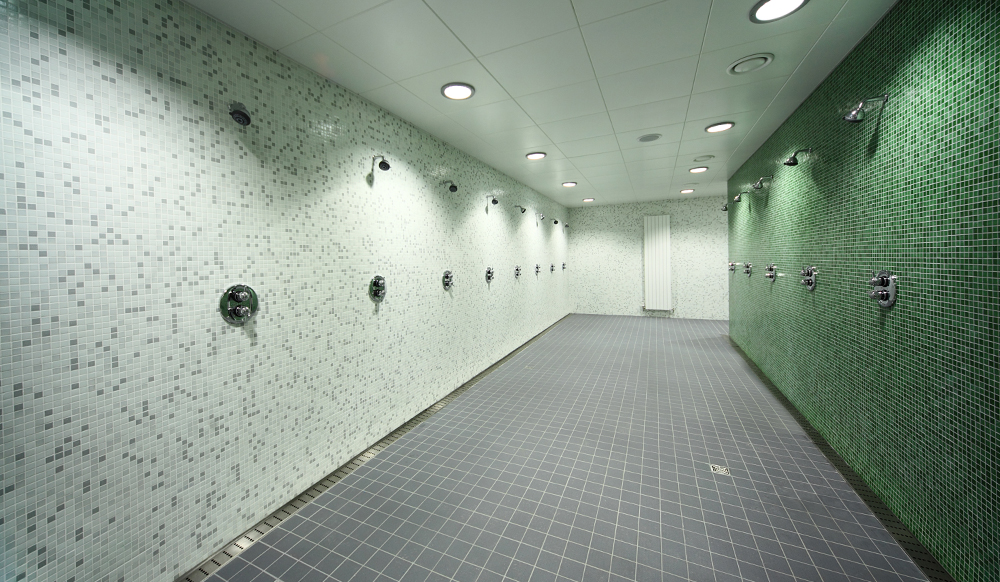Cleaning floor grout can be a challenging task. The first thing to remember is that cement-based grout, like a concrete floor, may not be uniform. After grout has been thoroughly cleaned, there may still be some darker spots next to lighter areas due to factors of installation. This is not something that can be changed with different methods of cleaning. When there are soils that need to be removed from grout, first wet the floor with a degreasing or general purpose cleaning solution. Next, let the solution sit for several minutes, and scrub the floor with a brush that can reach down into the grout. Then pick up the solution with a wet vacuum or mop, apply rinse water and scrub, and then pick up the rinse water.
Buckeye offers effective degreasers and general purpose cleaners that can be used for this purpose including Buckeye Maurader® and Eco® Hydrogen Peroxide Cleaner E15. Both of these products contain hydrogen peroxide and have excellent detergency for wetting the surface and suspending soil. The hydrogen peroxide reacts with some soils to make them more soluble in water which can physically loosen soils. If your facility has grout that won’t come clean after using a good cleaning solution there may be a discolored coating covering it. You can remove it with a Buckeye floor stripper, and follow up with a Buckeye water-based cleaner to scrub the floor.
Another option you can try is to used an acid-based cleaner such as Buckeye Eco Acid Cleaner E16 and Buckeye Gel Scrub™ Tub and Tile Cleaner. These products go after soils that are sensitive to acid chemistry and based on phosphoric acid. This allows them to attack the grout itself and loosen soils that can then be flushed loose from the floor. But do be careful to seal after the use of acid chemistry, since the use of acids is not meant to be a regular cleaning process. If you are unsure which solution is best use to clean your cement-based grout, try a small-scale test. This can reveal the winning solution without too much unnecessary work.
